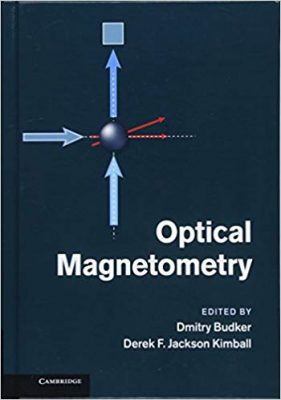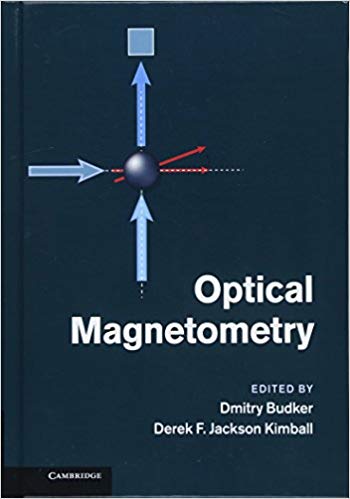 Editors: Dmitry Budker and Derek F. Jackson Kimball
Editors: Dmitry Budker and Derek F. Jackson Kimball
Publisher: Cambridge University Press – 412 pages
Book Review by: Sonu Chandiram
In optical magnetometry, a magnetic field is measured by observing changes in the properties of light interacting with matter immersed in the field.
This is not a new area of study, as its origins can be traced back to 1845 when Michael Faraday discovered the rotation of the plane of linearly polarized light as it propagated through a dense glass in the presence of a magnetic field. Faraday’s historic discovery was the first known experimental evidence demonstrating the relationship of light with electromagnetism, the editors of this book point out in their Preface.
About a century later, atomic magnetometers based on ‘optical pumping’ were introduced and over time, perfected by a number of pioneers. In recent years, there has been a revolution in this field of study, leading to new processes and the development of devices such as:
- Efficient anti-relaxation wall coverings
- Optical magnetometers based on color centers in diamonds
- Techniques for elimination of spin-exchange relaxation
- Tunable diode lasers
Today, optical magnetometers are pushing the boundaries of sensitivity and spatial resolution, and in contrast to their able competition from superconducting quantum interference device (SQUID) magnetometers, they do not require cryogenic temperatures. Some of the novel applications of optical magnetometers that have flourished are:
- Detecting signals in micro-fluidic nuclear-magnetic resonance chips
- Measuring magnetic fields in the human brain
- Observing single nuclear spins in a sold matrix.
Forty-two specialists in optical magnetometry and related fields, from all over the United States and eight other countries – Canada, Chile, Denmark, Germany, France, Israel, Poland, and Russia – authored the 20 chapters of this book
We present to you below the titles of the chapters to serve as a broad overview of the contents of this work:
- Part I. Principles
- General Principles and Characteristics of Optical Magnetometers
- Quantum Noise in Atomic Magnetometers
- Quantum Noise, Squeezing, and Entanglement in Radiofrequency Optical Magnetometers
- Mx and Mz Magnetometers
- Spin-Exchange Relaxation-Free Magnetometers (SERF)
- Optical Magnetometry with Modulated Light
- Micro-fabricated Atomic Magnetometers
- Optical Magnetometry with Nitrogen-Vacancy Centers in Diamond
- Magnetometry with Cold Atoms
- Helium Magnetometers
- Surface Coatings for Atomic Magnetometry
- Magnetic Shielding
- Part II. Applications
- Remote Detection Magnetometry
- Detection of Nuclear Magnetic Resonance with Atomic Magnetometers
- Space Magnetometry
- Detection of Bio-magnetic Fields
- Geophysical Applications
- Part III. Broader Impact
- Tests of Fundamental Physics with Optical Magnetometers
- Nuclear Magnetic Resonance Gyroscopes
- Commercial Magnetometers and their Applications
This book is a pioneering and unique work, as it puts together for the first time all the remarkable progress that has occurred in optical magnetometery. It lays down and discusses at length not only all the achievements, but also the conventions, principles and techniques in this field of science. Within its chapters, you’ll find charts and formulas that help you better understand the topics being discussed.
This book has been written for students and practitioners, as well as for anyone interested to learn about this exciting, fast-growing field. Go to www.Cambridge.org/9781107010352 which serves as a repository for additional and the latest information.
Editors:
Dmitry Budker is Professor of Physics at the University of California at Berkeley, Faculty Scientist in the Nuclear Science Division at Lawrence Berkeley National Laboratory, and co-founder and scientist at Rochester Scientific, LLC. His research interests are related to the study of violation of discrete symmetries and the development and applications of optical-magnetometry techniques.
Derek F. Jackson Kimball is Associate Professor and Chair of the Department of at California State University at East Bay. His research focuses on using techniques of experimental atomic physics and nonlinear optics for precision tests of the fundamental laws of physics.







